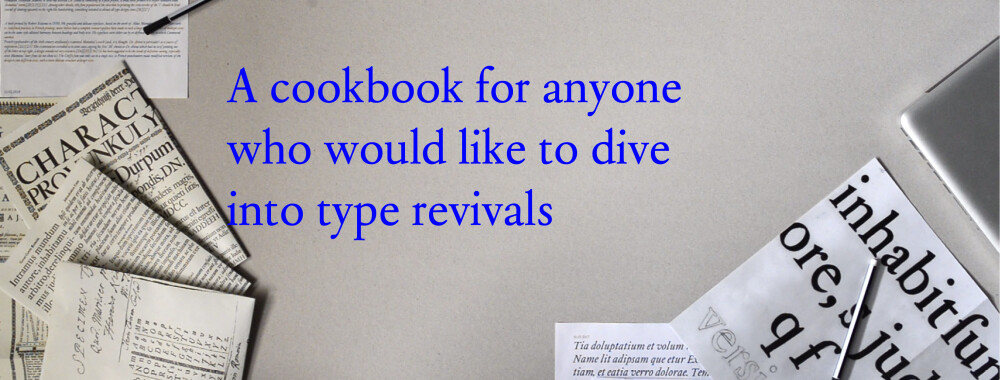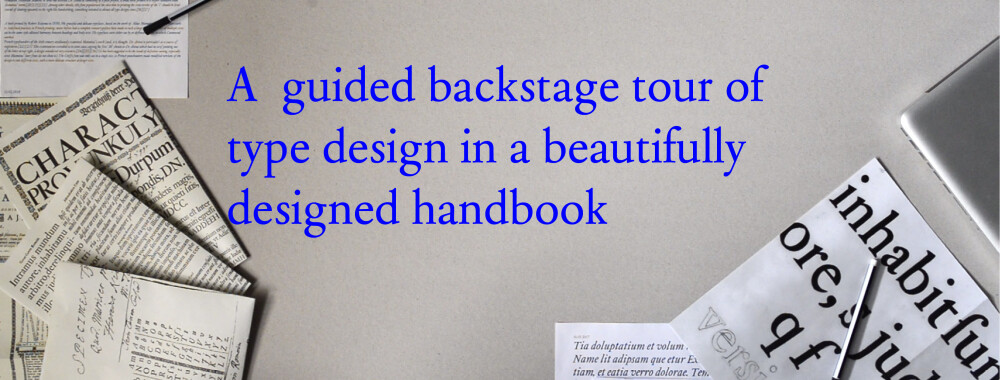Support us, so that we can make a unique book on typography become real!
Dear Reader, It’s great that you are here! We are Céline Hurka and Nóra Békés, two young graphic designers, and we would like to introduce you to our exciting project about designing contemporary letters based on archival sources. Our work started three years ago,
Support us, so that we can make a unique book on typography become real!
Dear Reader,
It’s great that you are here! We are Céline Hurka and Nóra Békés, two young graphic designers, and we would like to introduce you to our exciting project about designing contemporary letters based on archival sources. Our work started three years ago, and expanded into a joint venture of archive research, the design of two digital typefaces and the writing of a book. Céline revived Renaissance types of Garamont and Granjon; Nóra worked on the Baroque letters of Nicholas Kis. The project that evolved from a school assignment into a book compares and puts into dialogue two eras in the history of type design, and two approaches to creating type revivals.
From a school assignment to a book
The Reviving Type project started as two independent assignments at the Graphic Design Department of the Royal Academy of Art, The Hague: to create a revival from printed types from a freely chosen historical source. However, it soon became a personal obsession for both of us, which turned into a deep professional interest, and continued beyond the end of the school year. Alongside the number of the revived characters in our typefaces, the historical research and our database of archival material grew quickly. Soon we started discussing our process, reflecting on each other’s findings and techniques. Because we found both the study and the collaboration instructive, we decided to share our discursive story in five chapters.
Our discursive story in five chapters
The publication guides the reader through the process of finding original sources in archives, through historical investigation and design process, and finally to the finished typeface. The first part of the book provides insight into historical changes in type design through hands-on examples with theoretical background. The third part gives a thorough explanation of the production process of the revival typefaces. Here two different approaches are placed side by side, creating a conversation about possible working methods in type design. We discuss design decisions, technical details and difficulties of the process. We conclude with a specimen and a conversation: the reader can compare originals with the revivals and read our personal discussions about our design principles, which constitute vital parts of our process. Rich imagery of original materials and technical illustrations explain the texts visually. Altogether, the publication becomes a cookbook for anyone who would like to dive into type revivals.

A cookbook for anyone who would like to dive into type revivals
Reviving Type is a handy tool for students who want to start making typefaces, to learn about the history of type or to integrate archive research in their design process. After listing all the ingredients, the book presents two independent approaches to go about the revival design process, with a retrospective evaluation. This book is valuable for professionals in the field of type design and typography too, who want to broaden their perspective on historical type and its contemporary use, and explore the role of discourse and self-reflection in the design process. Finally the publication will be an exciting read for non-designers, who want to join for a guided backstage/behind-the-scenes tour of type design in a beautifully designed handbook. publication-volume-edition-work-treatise-monograph…

A guided backstage tour of type design in a beautifully designed handbook
Practically speaking, the book will be the size of a workbook—23 cm tall and 17 cm wide, consisting of 144 pages, printed in two colors, with a softcover—will be ideal to read, to carry around or to leaf through with an afternoon coffee. Beyond practicality and clarity, the layouts—also created by us (Céline and Nóra)—show the enthusiasm and care for the material.
The book includes a foreword by type designer and researcher Dr. Frank E. Blokland (Dutch Type Library), who also mentored the research and the production of the typefaces. Reviving Type has been chosen to be presented at the 2019 Conference of AtypI (Association Typographique Internationale) in Tokyo, September 2019.
We would like to ask your help, so that we can print this book. We will use the raised amount fully for the production costs of the publication: proofreading, printing, binding and related costs will be covered. Please, support us!
Website: www.revivingtype.com
Facebook: www.facebook.com/revivingtype
Twitter: twitter.com/RevivingType
About the authors:
Nóra Békés grew up in Hungary, and moved to the Netherlands to study graphic design at the Royal Academy of Art (KABK). Since her graduation in 2018 she works as an independent designer based in Rotterdam. Her practice focuses on the intersection of type design, typography and visual story telling. Her main interest lies at the research of archives and their contemporary interpretations. norabekes.nl
Céline Hurka grew up in Southern Germany and moved to the Netherlands to study graphic design at the Royal Academy of Art (KABK) in The Hague. She is expected to graduate with a BFA in the summer of 2019. Besides her studies she works on freelance projects in the cultural field, where she combines an interest in editorial design with emphasis on type design and photography. celinehurka.com
Nieuwste donaties
Julian Grybowski
18-07-2019 14:47A fascinating subject that deserves far more coverage, especially as I am attempting my own revival of a 20th century hot-metal typeface.
Stephen Nixon / Arrow Type
17-07-2019 11:28This looks like a great project to spread knowledge in type design!
Adam King
16-07-2019 20:27I want to see thoughtful and interesting work brought to life!






